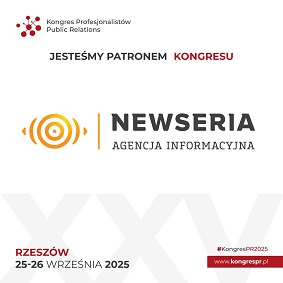Small Agency Responds to Rise of AI-Generated Design with Human-Centered Creative Approach
With AI-generated design on the rise, Brand Force 5 talks about the importance of emotion, strategy, and human insight in the future of branding and design.
Michael Maloney, founder of Brand Force 5, believes that meaning is getting lost in today’s fast-paced, AI-generated design and marketing landscape.
“We’re seeing a wave of content that looks polished but lacks emotional depth,” Maloney says. “Design should move people. It should say something about who you are and what you stand for.”
Brand Force 5 is a New Jersey-based creative agency focused on branding, advertising, and handcrafted graphic design. The agency works across mediums—from logos and brochures to campaigns, packaging, websites, and social content—bringing intentionality and emotion into every project.
According to Maloney, the rise of AI tools has opened up efficiencies, but it also presents a risk: the loss of human touch in creative work.
“We’re not against AI. We use digital tools all the time,” he says. “But we draw the line at outsourcing meaning. Insight, instinct, and love can’t come from a prompt.”
This position comes at a time when design tools powered by artificial intelligence are gaining popularity, enabling anyone to generate logos, layouts, and marketing visuals in a matter of seconds. While the technology is advancing rapidly, some in the creative industry are raising questions about what may be lost in the process.
Human designers bring something to the table that technology still can’t replicate—empathy, curiosity, and context. A good designer doesn’t just execute a request; they interpret the ask, anticipate needs, and uncover opportunities the client may not even have considered. They ask questions like “Who is this really for?” and “How will it make someone feel?”
Designers apply cultural awareness, historical knowledge, and emotional nuance to every decision. They know when to break rules, when to simplify, when to elaborate—and why. A palette choice isn’t just a color; it’s a cue. The type you choose isn’t just the difference between serif and sans serif—it’s personality, emotion, and intent. These decisions can’t be made by a machine that hasn’t lived, felt, or failed.
Maloney believes the answer lies in returning to the core values of design: communication, connection, and clarity. Brand Force 5 has long emphasized the importance of process—collaborating with clients, understanding their goals, and building brand experiences that reflect real stories and real people.
“Design isn’t just about what you see—it’s about what you feel,” he says. “That’s hard to replicate without a human connection. We believe great design is part strategy, part story, and part soul.”
His agency is guided by a philosophy they call the FORCE: Focused, Ownable, Relevant, Continuous, and Evocative. This framework shapes everything from initial discovery to final execution across all of the work they produce.
Brand Force 5’s commitment to this philosophy has earned it national recognition. The agency’s work—including the award-winning logo for Warm Heart Pediatrics—has been honored by the Davey Awards, GDUSA, and the Communicator Awards. A graphic showing the original inspiration behind that logo is included.
Maloney says the logo’s success is a reflection of something deeper: “It was about more than design. It was about care, meaning, and emotional connection. About understanding what the practice stood for and finding a way to express that visually.”
As the conversation around AI continues to evolve, Brand Force 5 hopes its message offers a counterpoint—one that centers people, process, and purpose.
“We want to be part of a bigger conversation,” says Maloney. “Not just about where design is going, but about what matters along the way.”
To learn more, visit www.brandforce5.com or read the agency’s latest blog post at www.brandforce5.com/blog
Michael P. Maloney
Brand Force 5
+1 862-339-4404
email us here
Visit us on social media:
LinkedIn
Instagram
Facebook
TikTok
Legal Disclaimer:
EIN Presswire provides this news content "as is" without warranty of any kind. We do not accept any responsibility or liability for the accuracy, content, images, videos, licenses, completeness, legality, or reliability of the information contained in this article. If you have any complaints or copyright issues related to this article, kindly contact the author above.
Metal Aerosol Packaging Market to Hit USD 13,354.5 Million by 2035, Driven by Sustainability and Consumer Demand | FMI
Unily Appoints Lokdeep Singh as Chief Executive Officer
Honeygirl Debuts 'Denim & Diamonds,' Inspired by Her Real-Life Love Story with Gin Blossoms Guitarist
Kalendarium
Więcej ważnych informacji
 Jedynka Newserii
Jedynka Newserii

 Jedynka Newserii
Jedynka Newserii

Finanse

Uchodźcy z Ukrainy pomogli wygenerować 2,7 proc. PKB Polski w 2024 roku. Napływ nowych pracowników znacznie zmienił polski rynek pracy
Uchodźcy z Ukrainy coraz lepiej radzą sobie na polskim rynku pracy – pracuje 69 proc. z nich – wynika z najnowszego badania przeprowadzonego przez Deloitte dla UNHCR. Jednocześnie wciąż w tym obszarze jest wiele wyzwań, w tym bariery językowe czy kwestie dotyczące uznawania kwalifikacji, np. w zawodach medycznych i prawniczych. Na rosnącej aktywności zawodowej Ukraińców mocno skorzystała polska gospodarka, ale też sam rynek pracy: wzrosła konkurencja, a Polacy uzyskali możliwość specjalizacji i objęcia stanowisk menedżerskich, eksperckich i technicznych.
Ochrona środowiska
W UE wciąż więcej kontroli działań firm w ramach ESG niż zachęt. Konieczne jest złagodzenie podejścia

Instytucje unijne powinny bardziej koncentrować się na celach i możliwościach rozwoju, jakie daje ESG, a nie kontroli działań firm w tym obszarze i obowiązków sprawozdawczych – twierdzą przedstawiciele organizacji Business for Good. Konieczne jest więc złagodzenie obowiązujących regulacji. Europa powinna również dążyć do utworzenia wspólnego rynku o ujednoliconych przepisach i mechanizmach.
Konsument
Wakacje wyzwaniem dla operatorów komórkowych. W najpopularniejszych kurortach ruch w sieci rośnie nawet pięciokrotnie

Długie weekendy i wakacje to wymagający czas dla operatorów komórkowych. W najbardziej obleganych kurortach udział abonentów tylko sieci Play w stosunku do liczby mieszkańców przekracza 500 proc. Dlatego operator planuje dalszą rozbudowę swojej sieci komórkowej do minimum ponad 15 tys. stacji bazowych. W latach 2020–2024 Play zainwestował w sieć i częstotliwość ponad 6 mld zł.
Partner serwisu
Szkolenia

Akademia Newserii
Akademia Newserii to projekt, w ramach którego najlepsi polscy dziennikarze biznesowi, giełdowi oraz lifestylowi, a także szkoleniowcy z wieloletnim doświadczeniem dzielą się swoją wiedzą nt. pracy z mediami.









.gif)

 |
| |
| |
|